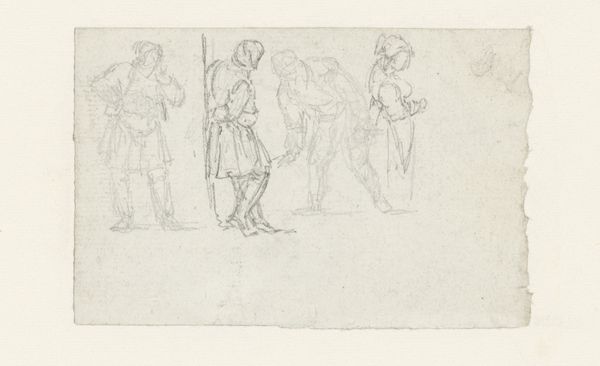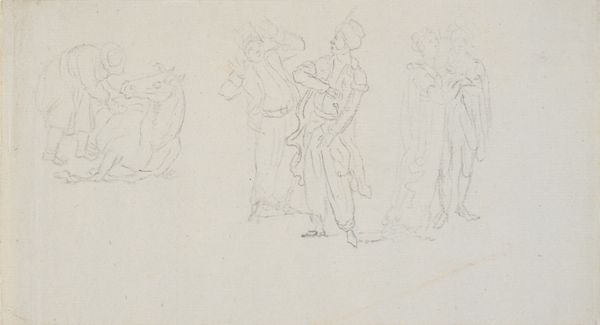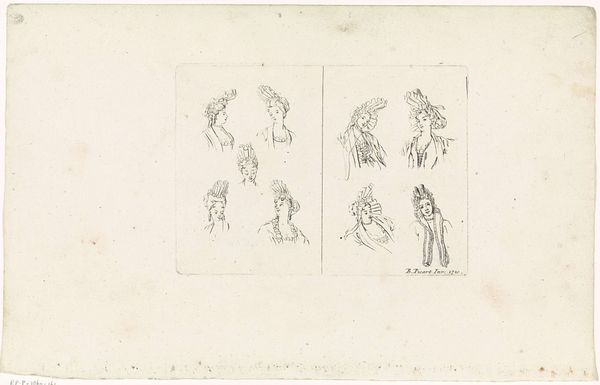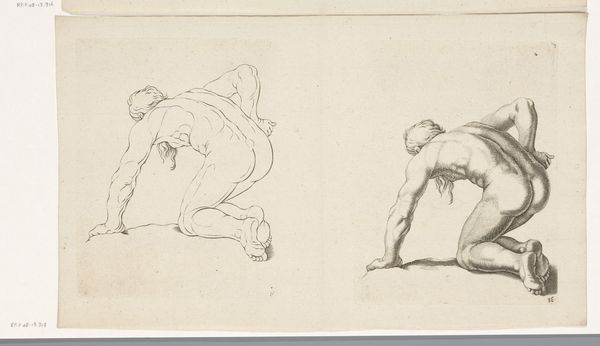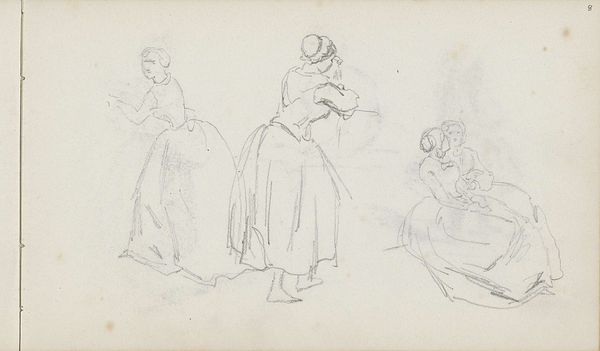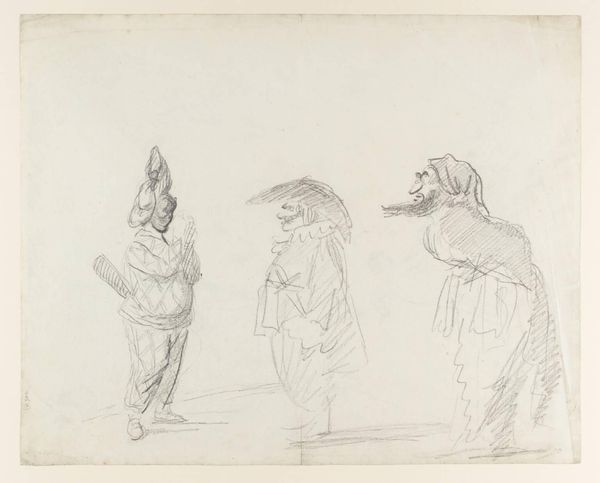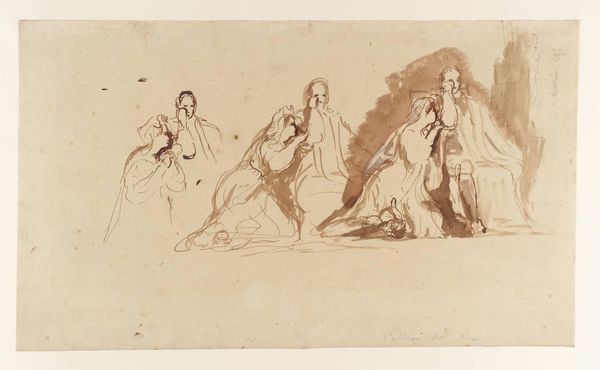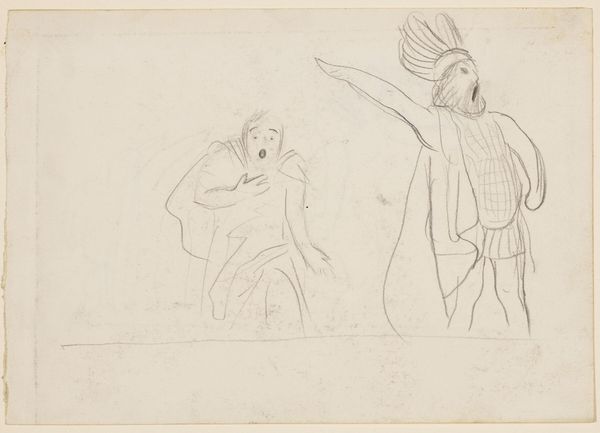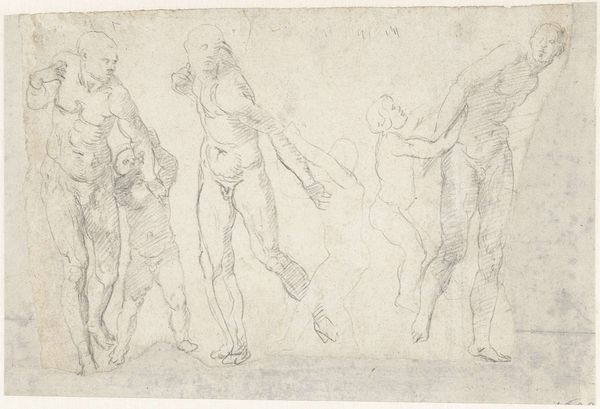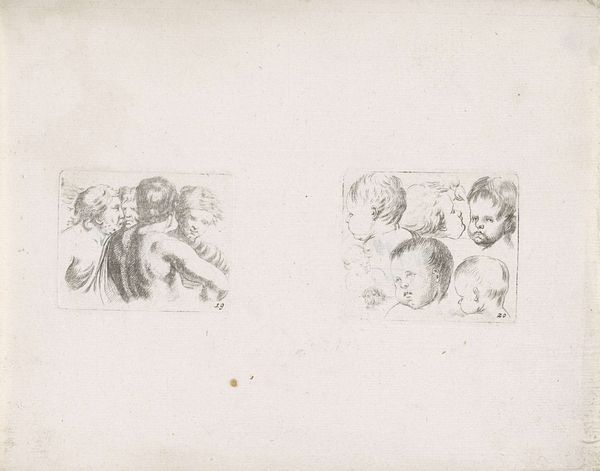
drawing, pencil
#
drawing
#
imaginative character sketch
#
light pencil work
#
quirky sketch
#
sketch book
#
figuration
#
personal sketchbook
#
idea generation sketch
#
character sketch
#
pencil
#
sketchbook drawing
#
storyboard and sketchbook work
#
academic-art
#
nude
#
sketchbook art
Dimensions: height 85 mm, width 122 mm
Copyright: Rijks Museum: Open Domain
Curator: This pencil drawing is entitled "Twee naakte vrouwen, de rechter met een sluier," which translates to "Two nude women, the one on the right with a veil," attributed to Henri Cameré, created sometime between 1864 and 1894. Editor: Interesting, I'm immediately drawn to the contrast between the figures—one seemingly vulnerable, almost shrinking, while the other has this sense of defiant energy, enhanced by the drapery. Curator: Considering the date, it is possible to view these female figures as emblematic of the artistic exploration of the nude form popular during the academic art movements. It also reminds us of the vital role that sketchbooks played in studios in the late 19th Century as a space of personal exploration and idea development. Editor: I see that. Note how the figure on the right engages the limited space of the page—arms extended—suggesting dynamic movement and a rejection of compositional confinement, while the figure on the left retreats and is less firmly fixed within the piece. Curator: Good point! One could also discuss how the materiality of pencil allows for the swift depiction of form. It is worth acknowledging the social constraints that the artist operated under; his available materials were subject to political forces as they traveled through his studio. Editor: Yes, the formal language suggests an intention, despite its sketchy nature. Consider the expressive lines, the composition, the suggestive use of light and shadow—all creating distinct impressions of gesture and intent. What kind of statement could Cameré be attempting through juxtaposing those forms? Curator: I suppose, if we broaden the question to his likely patrons, we could also wonder about what statements *they* might have been looking for, by commissioning works with those gestures and intents, at a moment of rapid social and technological transformation in Paris. Editor: In any case, it is through works like this drawing that we can really think through our role of viewing. What this sketchbook study lacks in grandeur, it more than compensates for through an honest exploration of forms in space and light. Curator: Indeed, considering the historical forces under which its graphite was mined and distributed reminds us how simple tools like pencil, and unassuming art, can reveal hidden worlds.
Comments
No comments
Be the first to comment and join the conversation on the ultimate creative platform.

